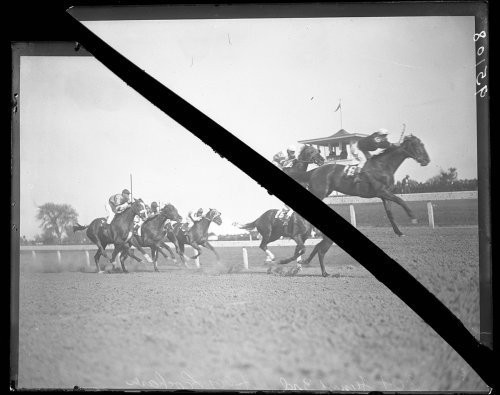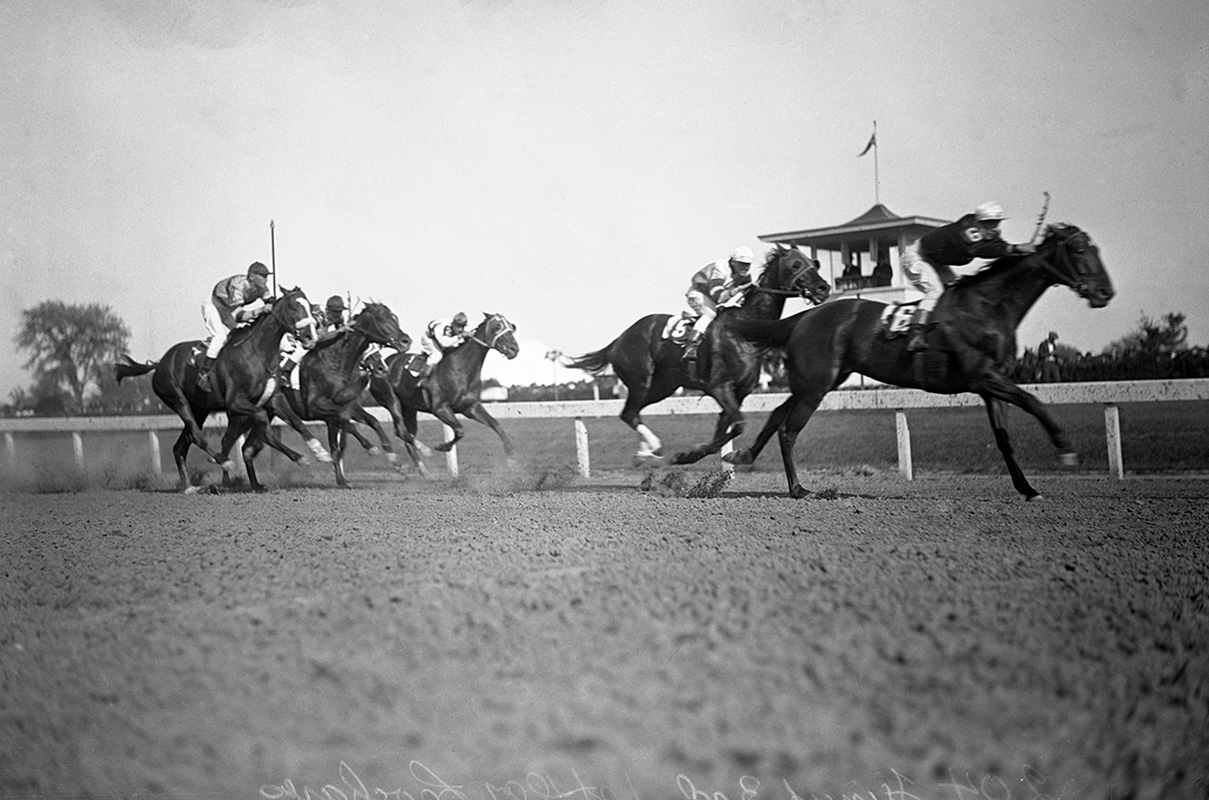Fixing Races

When is it okay to fix a horse race? When it’s an image from the 1928 Kentucky Derby captured on a broken glass plate negative.
The Kentucky Derby Museum is undertaking a giant project: to organize, preserve, scan, clean up, and research the photo collection of Churchill Downs Racetrack. There are over twenty large boxes of glass, nitrate, and acetate negatives, black and white and color photos of all sizes, slides, photo albums, adverts, and other ephemera in the collection. The material spans from 1875 to about 2010 and we estimate there may be over 100,000 images in these boxes!
Due to their inherent fragility, the glass plate negatives received immediate attention. There are 46 of these negatives and they were in thin, old, and torn manila envelopes. They were stacked in a scattered pile in a small box. Remarkably, only one was broken! We needed to give them some care and a better home, but first we scanned them for a closer look. These high resolution scans do a few things; first they give instant access to the image and allow us to really zoom in on details. Second, having these scans means we rarely, if ever, need to touch the negatives again. Less handling equals a longer life for the glass plate negatives. And third, we can do a bit of digital clean up on the images and sometimes ‘repair’ damage done to the original.
 1928 Kentucky Derby, digitally repaired glass plate negative
1928 Kentucky Derby, digitally repaired glass plate negative
After scanning, we housed the glass plates in new acid-free enclosures and placed them in sturdy and appropriately-sized archival boxes with a little cushioning between each negative. They are now safe from sliding and shifting around and possibly breaking. A bit of Derby history saved for the future.
We are keeping scans of the originals, like the broken negative above but the ‘repaired’ photos will be uploaded, along with metadata, onto an internal website for Churchill Downs Racetrack.
Most of the collection has been well documented and used over the years so many of the photos will be familiar to the Museum and the Racetrack, as well as fans. But we’re pretty sure there will be quite a few ‘never before seen’ photos in the boxes and that makes this project exciting and fun!
It will be a long time before the collection is completely processed. In the meantime, check back here for some of the more unusual and interesting images we are sure to discover. And learn more about our methods and how we’re progressing on this journey through the visual history of the Kentucky Derby.


